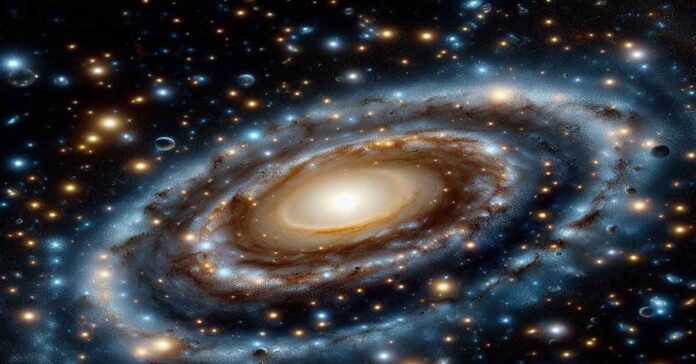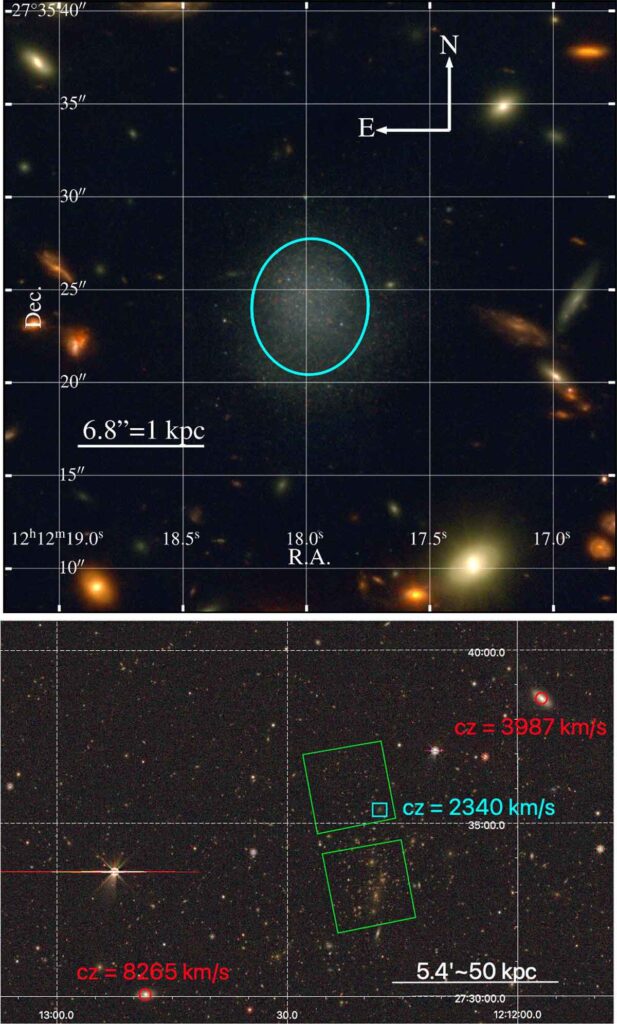In a groundbreaking revelation, a team of astronomers led by Tim Carleton from Arizona State University has uncovered a dwarf galaxy that defies conventional understanding.
Termed PEARLSDG, this enigmatic galaxy was stumbled upon during observations with the James Webb Space Telescope (JWST), challenging existing notions of galactic evolution and formation.
Unexpected Discovery
Initially focusing on a cluster of galaxies as part of the PEARLS project, the team serendipitously encountered PEARLSDG in the JWST imaging.
Contrary to expectations, this dwarf galaxy stood out for its anomalous characteristics, marking a departure from the typical traits observed in dwarf galaxies.
An Unconventional Find
PEARLSDG presents a puzzling case of an isolated quiescent galaxy, deviating from the norm of dwarf galaxies that either interact with neighboring galaxies or continue forming new stars. Carleton emphasizes the rarity of such discoveries, noting its significance in refining existing theories of galaxy formation.
Unveiling Galactic Mysteries
Utilizing a comprehensive array of data sources including JWST’s NIRCam and ground-based imaging, the team meticulously analyzed PEARLSDG’s composition and behavior. Their findings challenged established paradigms, shedding light on the intricacies of galactic evolution.
Stellar Insights
A remarkable aspect of the discovery lies in the ability to observe individual stars within PEARLSDG, a feat facilitated by JWST’s advanced imaging capabilities. These observations provided crucial insights into the galaxy’s distance and composition, pushing the boundaries of astronomical exploration.
Revolutionary Implications
The revelation of PEARLSDG not only expands our understanding of galactic diversity but also prompts a reevaluation of existing models of galaxy evolution. This discovery hints at the presence of numerous unidentified quiescent galaxies awaiting exploration, signaling a new era of discovery enabled by JWST’s advanced technology.
Conclusion
In an era marked by unprecedented advancements in astronomical observation, the discovery of PEARLSDG stands as a testament to the boundless potential of exploration. As researchers continue to unravel the mysteries of the cosmos, each new revelation brings us closer to comprehending the vast complexities of the universe.
FAQ
A dwarf galaxy is a small galaxy characterized by its low luminosity and relatively small size compared to larger galaxies like the Milky Way. They typically contain fewer than 100 million stars.
Dwarf galaxies are actually the most abundant type of galaxies in the universe. Despite their small size, they play a crucial role in our understanding of galactic evolution.
PEARLSDG’s discovery is significant because it challenges existing theories of galactic evolution. Its status as an isolated quiescent galaxy contradicts conventional understanding, prompting astronomers to rethink current models of galaxy formation.
PEARLSDG was stumbled upon during observations with the James Webb Space Telescope (JWST). While initially focusing on a cluster of galaxies, astronomers detected PEARLSDG in the JWST imaging, revealing its unique characteristics.
Unlike typical dwarf galaxies, PEARLSDG is not interacting with nearby galaxies nor is it forming new stars. This makes it a rare case of an isolated quiescent galaxy, challenging previous assumptions about galactic behavior.
Astronomers utilized JWST’s advanced imaging capabilities to observe individual stars within PEARLSDG. By measuring the apparent brightness of these stars and comparing it to their intrinsic brightness, astronomers were able to determine the galaxy’s distance—approximately 98 million light-years away.
The study of PEARLSDG involved a wide range of data sources, including imaging data from JWST’s NIRCam, spectroscopic data from the DeVeney Optical Spectrograph, and archival imaging from NASA’s Galex and Spitzer space telescopes, among others.
More information: Timothy Carleton et al, PEARLS: A Potentially Isolated Quiescent Dwarf Galaxy with a Tip of the Red Giant Branch Distance of 30 Mpc, The Astrophysical Journal Letters (2024). DOI: 10.3847/2041-8213/ad1b56


